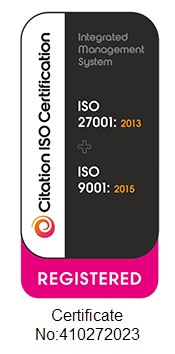THIS ARTICLE AT A GLANCE
CONTACT ETS
If you have any questions or would like to discuss further what you should be doing, ETS is here and willing to help.
Call 0117 205 0542
Email enquiries@energy-ts.com
Submit a contact form
CHECK OUR SERVICES
Complying with Carbon Regulations: A Chance to Drive Commercial Growth and Achieve CSR Goals

Every building regardless of its size or operation will consume energy daily. Whether it is one building or a large estate, the risk of overlooking proper energy management can be costly to the building owner, the occupants, and the environment.
Energy Intensity Ratio is a good way to check the performance of your building because energy consumption can be determined per floor area, occupancy, or both. This can then be compared to industry standards to confirm the efficiency of your building.
The non-domestic national energy efficiency data framework, published in 2022, used total energy consumption and energy intensity to compare building with different uses and sizes. Typically, the total energy consumption tends to increase as building size increases. However, energy intensity conveys that smaller sized buildings (0-50 square meters) have a higher electricity and gas consumption per floor area when compared to larger buildings (greater than 5,000 square meters). If we focus solely on consumption, a large estate will naturally consume more energy than a single building but if we consider energy intensity, a single building would likely to be more inefficient. What this tells us is that energy management matters for a single or small sized building and large-sized buildings or estates.
A more conscious approach will need to go into energy management as a building estate expands but that does not mean that it must be difficult especially if the right system has been developed from the onset. There may be a hierarchy in decision making when it comes to energy management policies and changes but there needs to be leadership interest, knowledge, and responsibility. This ensures the efficient and effective performance of the energy management system.
Regardless of the size of the estate the energy management tools remain the same. There needs to be an energy management strategy in place that targets energy consumption, cost, and emissions. Performance must be monitored for continual improvement to policy, data, optimization, and performance. It is important to have a skilled and competent energy manager to do this.
Amend building services scheduling
We recommend amending building services plant and equipment schedules to align more closely with your amended operating hours. This should be done through the BMS (Building Management System) wherever possible, ensuring that all equipment is put into ‘auto’ and not left on ‘hand’ settings. This will ensure that the equipment is appropriately controlled through the BMS and aligned with updated scheduling.
Reduce any heating and air conditioning
You should reduce set points for space heating and introduce setbacks for out of hours occupancy, though you shouldn’t turn off boilers and heating equipment off fully. There will need to remain some level of cycling for building services equipment to allow for frost protection and building fabric protection. You’ll also need to take into account any partial occupancy throughout the shutdown period.
Much of the same applies to air conditioning and ventilation. Ventilation equipment should be reduced, but not turned off completely. Consideration should also be given to the use of reduced and localised ventilation through fan coil units if possible, to reduce any reliance on centralised whole-building space conditioning.
Turn off lighting and small power items where possible
Check any and all lighting that isn’t controlled by the BMS and turn off where possible, but be sure to maintain any lighting levels required to ensure safety in certain environments – for example, external lighting in urban areas as appropriate. Lighting should be reduced as much as possible, but maintaining safety while doing so is key.
Building managers should also ensure that once the building is vacated, all computers, screens and audio-visual equipment are fully turned off and not left in sleep mode. Similarly, all small power items should be turned off where appropriate and not left in hibernate.
Maintain critical water systems
It’s also crucial to take the right approach to your water systems when shutting down your building. Critical systems should be maintained, and operation kept in-line with the Health & Safety Executives Approved Code of Practice L8 to mitigate the risk of legionella upon building reactivation.
Continue to track energy consumption
It’s important to align your updated temporary strategy with any energy management software or external bureau that is being used by the building. Any alerting parameters for excessive consumption should be adjusted to align with the new operational profile.
This will enable you to have a good handle on any potential areas with excessive consumption during a shutdown or lower occupancy period. Additionally, it’s also a great way to gain insight into your baseline consumption within the property. This will then enable you to make better energy management decisions when the building comes back into full operation.
Final thoughts
If you are looking for an energy management system that is tailored to your business needs, ETS can provide you with 25 years of experience in dramatically improving energy efficiency and reducing environmental impacts. Whether your businesses have individual assets or large international portfolios, ETS can assist you in saving substantial amounts of money while significantly reducing your carbon performance.
To discuss your requirements, get in touch. You can contact us by calling 0117 205 0542 or drop us an email at enquiries@energy-ts.com.
Related Article
8 Ways Businesses Can Reduce Energy Use in the Workplace This Winter
Discover how to comply with ESOS Phase 4 and unlock energy-saving opportunities for your business. This guide explains the requirements, highlights key deadlines, and provides actionable strategies. Learn how energy audits, tailored action plans, and expert support can reduce costs, improve efficiency, and align your organisation with sustainability goals.
ESOS Action Planning: Complying with Phase 4 and Implementing Energy Saving Strategies
Discover how to comply with ESOS Phase 4 and unlock energy-saving opportunities for your business. This guide explains the requirements, highlights key deadlines, and provides actionable strategies. Learn how energy audits, tailored action plans, and expert support can reduce costs, improve efficiency, and align your organisation with sustainability goals.
Important Update: What You Need to Know about ESOS Phase 3
Time is ticking for the ESOS Phase 3 deadline. The Environment Agency announced that the reporting system is available now. For organisations qualifying for ESOS Phase 3, the deadline for submitting a compliance notification is 5 June 2024, and organisations should still look to meet this compliance notification deadline where possible.










































































